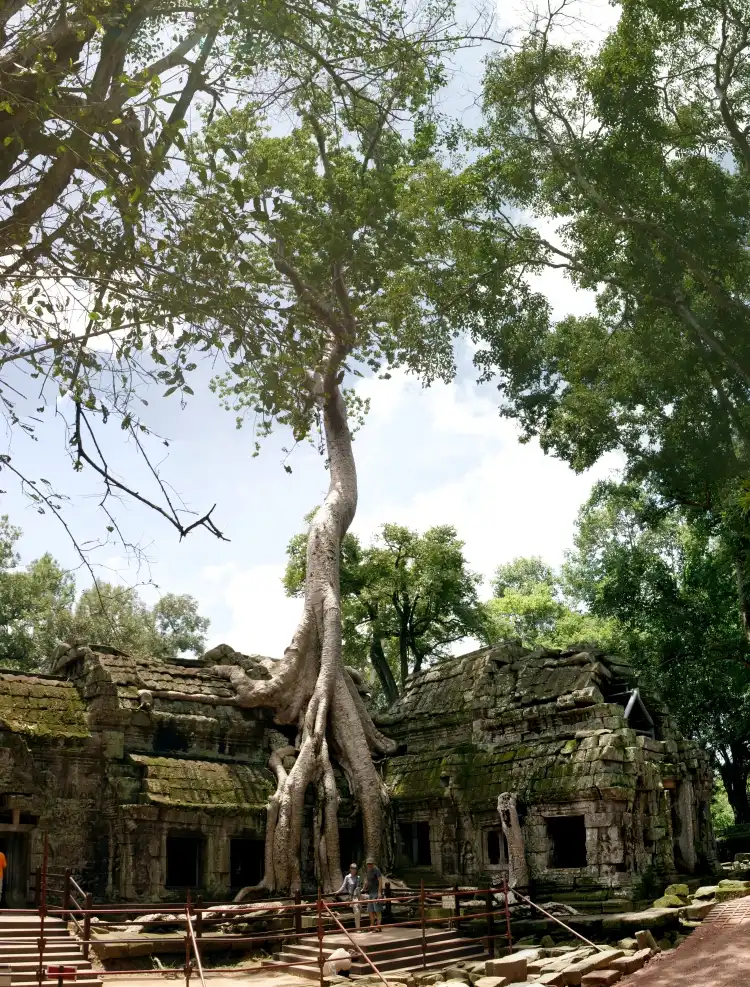Ta Prohm, with its unique blend of natural beauty and historical significance, offers a surreal experience that transports visitors back in time. It’s a must-visit for anyone exploring Cambodia’s rich cultural heritage and the majestic ruins of Angkor.

Discovering Ta Prohm: A Journey Through Cambodia’s Enchanted Ruins
Nestled in the heart of Cambodia’s ancient city of Angkor, Ta Prohm stands as a captivating testament to the ingenuity and artistry of the Khmer empire. This temple, unlike many others, has been left largely as it was found. Embraced by the jungle, with trees and vines interwoven through its stone structures, it is creating a breathtaking blend of nature and architecture.
A Glimpse into History
Constructed in the late 12th and early 13th centuries under King Jayavarman VII, Ta Prohm was dedicated to the king’s mother, making it a monument of immense personal significance. Originally named Rajavihara (Monastery of the King), it served as a Buddhist monastery and university. It used to house over 12,500 people, including 18 high priests and 615 dancers. An additional 800,000 inhabitants in the surrounding villages worked to support the temple complex.
The Enchantment of Ta Prohm
What makes this temple unique is its state of preservation. It allows visitors to experience the temple much as the early explorers did. The sight of the massive tree roots intertwining with ancient stone walls has a mesmerizing effect. This natural phenomenon has made Ta Prohm one of the most photographed and celebrated temples in the Angkor region.
Navigating Ta Prohm
Access to Ta Prohm is easy. It is located just a few kilometers away from the main temple complex of Angkor Wat and Angkor Thom. Visitors can hire a tuk-tuk or a bicycle to explore the area. Walking through the temple, one can marvel at the intricate carvings and bas-reliefs depicting scenes from mythology and everyday life in the Khmer empire.
Best Time to Visit
The best time to visit is early in the morning or late in the afternoon. It is better to avoid the crowds and to catch the soft lighting that enhances its mystical ambiance. The rainy season (May to October) offers a lush, vibrant setting. But the dry season (November to April) provides easier access and exploration of the ruins.
Tours
Major Angkor Wat tours also visit the temple. Please check this link.